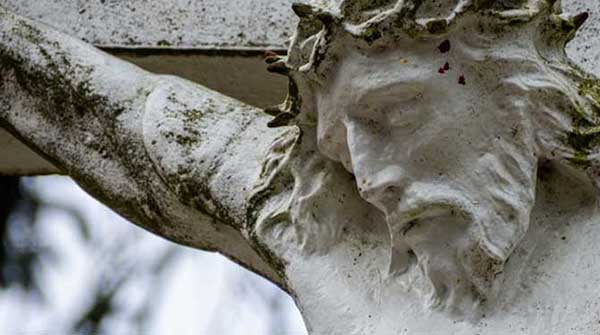The child that was me experienced the lead-up to Easter as foreboding rather than inspiring
 I was never big on Easter. As a Catholic schoolboy in 1950s Ireland, Easter played second fiddle to Christmas. In fact, the competition wasn’t even close.
I was never big on Easter. As a Catholic schoolboy in 1950s Ireland, Easter played second fiddle to Christmas. In fact, the competition wasn’t even close.
Christmas had several advantages.
For one thing, school holidays were longer. Whereas Easter only delivered a week and a half, Christmas tacked on a further full week.
The tone, too, was very different.
Christmas had an excitement, even magic, what with Christmas trees, decorations, coloured lights and such. And although gifts were modest by 21st-century standards, they were still real.
 |
| Related Stories |
| Who was Pontius Pilate, the man who sentenced Jesus to death?
|
| Hippity hoppity: following the trail of the Easter bunny’s origins
|
| In stillness, we find treasure
|
Other than your birthday or a special occasion like your first communion, Christmas was perhaps the only time you got a book of your own to keep. And to meet the demand, the publishing industry flooded the market with a wide range of comic book annuals sporting colourful hardcovers and sturdy spines.
My particular poison was the Billy the Kid annual, which, if I remember correctly, was a spinoff from the strip in the weekly U.K. Sun comic. Of course, the character depicted therein bore scant resemblance to the grubby real-life William Bonney. But that was the whole point. We were into adventure fantasy, not history’s sordid underbelly.
Christmas also had its own cheerful soundtrack. In the Dublin of my childhood, Christmas music didn’t come on the radio right after Halloween. Most likely, you wouldn’t be reacquainted with Rudolph or Jingle Bells until well into December, at which point they oozed good cheer rather than ennui.
In contrast, the lead-up to Easter was sombre – you might even call it downright gloomy. And children don’t always do gloom well.
It began with Ash Wednesday and the season of Lent, a period of six weeks or so during which we were supposed to repent and practise self-denial. Typically, adults would refrain from things like smoking, while children would forego candy. Often, of course, these resolutions were honoured more in the breach than in the observance, but the mood effect was still the same.
The days immediately preceding Easter Sunday deepened the feeling.
School would close down on what we called Spy Wednesday, and the local cinema would shut on Holy Thursday and Good Friday. Proceedings in church were particularly solemn, with statues and crucifixes shrouded and the Crucifixion narrative dominating everything.
That narrative, culminating in Easter Sunday’s resurrection, is hugely significant to millions of people. And I mean it no disrespect. Indeed, even non-believers can find the words to something like When I Survey the Wondrous Cross sufficiently moving to raise the hairs on the back of the neck.
But the child that was me experienced the whole thing as foreboding, even frightening. So I did what one often does in such circumstances: I opted not to think about it very much.
Decades later, the narrative came back into focus courtesy of William F. Buckley Jr.’s Nearer, My God. Buckley subtitled his book An Autobiography of Faith and, because it caught his eye, chose to include an English translation of Maria Valtorta’s vision of the Crucifixion.
Valtorta (1897-1961) was an Italian mystic who authored a five-volume epic called The Poem of the Man-God. Part of the fifth volume was her depiction of the Crucifixion, which she asserted she’d seen in a vision.
Unsurprisingly, this raised some hackles. To quote Buckley: “She got into trouble with the authorities in the Vatican because she insisted that what she had written about the Crucifixion was what actually happened.” The Vatican’s unease was sufficient for the book to be consigned to its index of prohibited reading.
Buckley, however, chose to include it. Notwithstanding its crudity, he found Valtorta’s “artful portrayal” inspiring. On first reading, he was instantly reminded of the spiritual Were You There When They Crucified My Lord?
Alas, though, my reaction was quite different. To me, Valtorta’s vision was macabre and disquieting. Like Mel Gibson’s 2004 movie The Passion of the Christ – which I took a pass on – the subject matter isn’t one that I wish to ponder in such excruciating detail.
It’s not a matter of being unaware of the harrowing nature of extreme violence. And sometimes such violence is even necessary or at least the lesser of two evils. But it’s not inspirational.
At the end of the day, perhaps the child and the septuagenarian have much in common.
Pat Murphy casts a history buff’s eye at the goings-on in our world. Never cynical – well, perhaps a little bit.
For interview requests, click here.
The opinions expressed by our columnists and contributors are theirs alone and do not inherently or expressly reflect the views of our publication.
© Troy Media
Troy Media is an editorial content provider to media outlets and its own hosted community news outlets across Canada.
